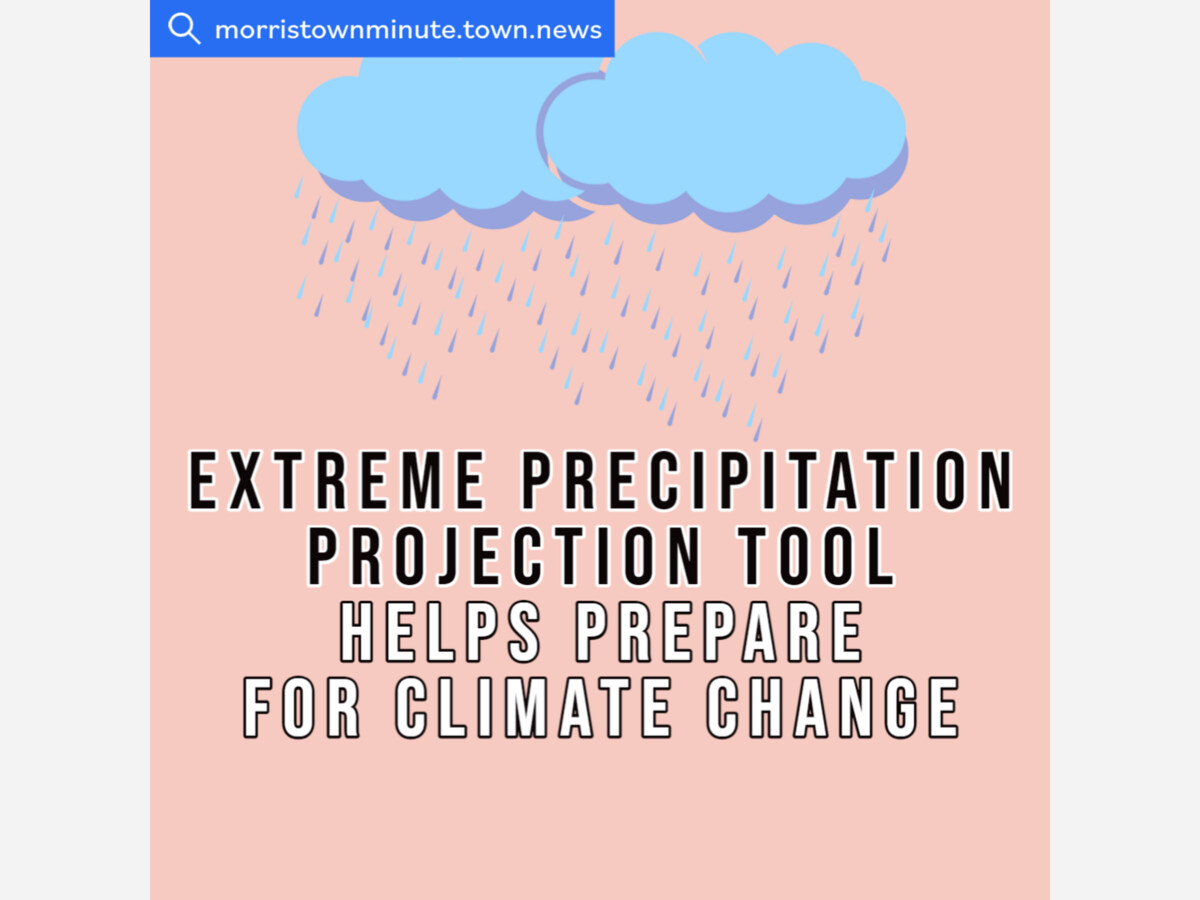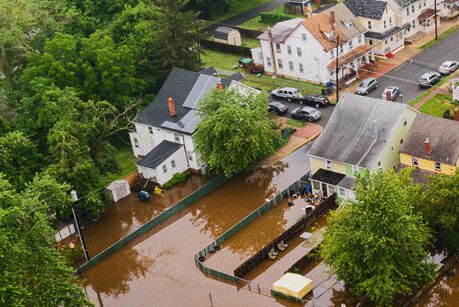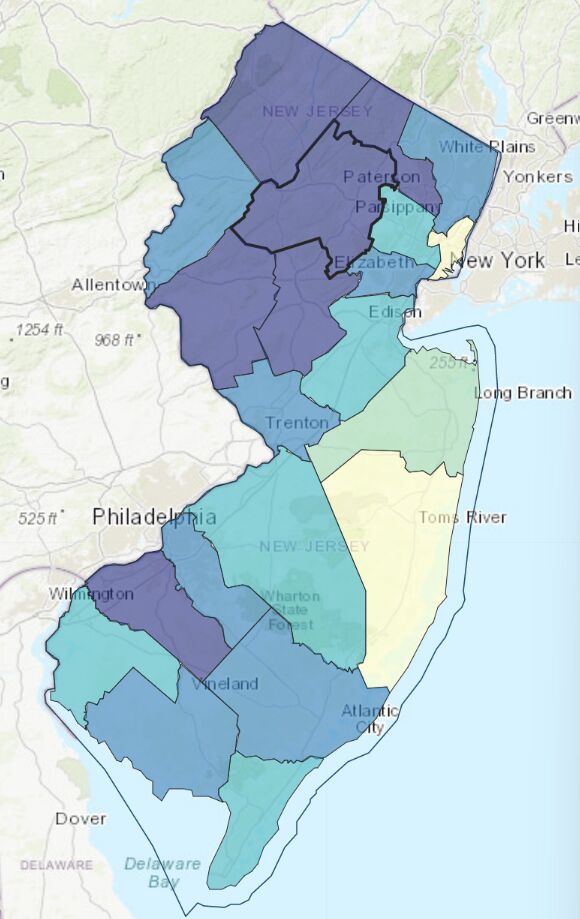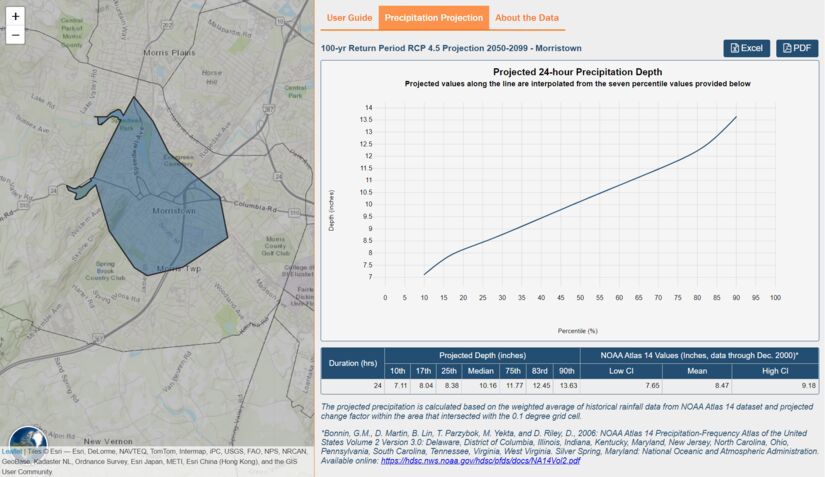Image


The New Jersey Department of Environmental Protection announced on 4/19 the launch of an online precipitation projection tool.
This online tool from the NJDEP will help planners, local governments, developers, and residents better understand the increasing occurrence of extreme precipitation events, as confirmed by recent studies by the Northeast Regional Climate Center.
Improved understanding of the effects of climate change and extreme precipitation events will help decision-makers and the public take the informed actions necessary to adapt to and combat a changing climate.

The New Jersey Extreme Precipitation Projection Tool allows users to view a range of rainfall depths, with options for frequencies, emission scenarios, and time periods.
Due to increasing greenhouse gas emissions and the resulting climate change, extreme precipitation events are expected to increase in frequency and intensity throughout the century.
This new tool allows users to zoom in to local areas and view a depiction of the likely precipitation depth that would occur with various storm scenarios. Users can also compare these projections with the values currently published in the NOAA Atlas 14 reference report.
The tool is being launched during Earth Week, which has the global theme this year of Invest in Our Planet.
“While Earth Week is certainly a time to celebrate our planet and our environment, it is also a time to commit to making hard choices to adapt to a changing planet and become more resilient,” said Environmental Protection Commissioner Shawn M. LaTourette. “This Extreme Precipitation Projection Tool is an investment in our planet by helping to open our eyes to the realities of climate change-induced flooding and helping us make better decisions on how and where we build. This tool will help all of us make informed choices to ensure that development is able to withstand the test of a changing planet.”
The tool incorporates important findings of two New Jersey-specific studies by the Northeast Regional Climate Center at Cornell University in partnership with the NJDEP.
The studies, released in November, found that extreme precipitation events have been increasing for the past 20 years and will continue to increase throughout the end of the century.
The studies found that precipitation expectations, which relied on data obtained through 2000, that previously guided state policy, planning, and development criteria did not accurately reflect current precipitation levels.
By incorporating additional data through 2019, extreme precipitation amounts were found to be 2.5% higher, and in some parts of the state 10% higher, than the outdated data would suggest.
The studies also found that precipitation is likely to increase by more than 20% from the historical baseline (1950-1999) through 2100.
Projected precipitation changes are expected to be greater in the northern part of New Jersey than in southern and coastal areas, with upper likelihood projections for some northwestern counties seeing increases in precipitation by as much as 50%.
The NJDEP will use the Extreme Precipitation Projection Tool in planning and decision-making processes and encourages local government agencies, planners, and developers to use the tool when assessing needs for flood hazards and stormwater management permits.
“Through Governor Murphy, New Jersey has become a national leader in efforts to reduce carbon emissions and become more resilient to climate change. Under Governor Murphy, New Jersey has returned to the Regional Greenhouse Gas Initiative, is moving forward with the development of offshore wind energy and is implementing policies to spur the sale of clean electric vehicles. In addition, the DEP has prepared the state’s first Scientific Report on Climate Change, worked collaboratively with other agencies to adopt a Climate Change Resilience Strategy, and launched the NJ Protecting Against Climate Threats (NJ PACT) regulatory reform process.” – Office of the Governor of New Jersey
Counties in our state are labeled by color to show where the greatest increase in precipitation is likely to occur.
The map below shows precipitation increases by county over the next 100 years. The darker the color, the greater increase in precipitation.

Morris County is projected to see a 46% increase in precipitation, measured by precipitation depth, or amount of rainfall.
From 2020 to 2069, the NJDEP projects that precipitation rate and depth will increase by 43% in Morris County.
With a five-year time window, precipitation depth is expected to increase 27% in Morris County, the highest 5-year increase of all New Jersey counties.
The tool also shows individual municipalities, like Morristown: projected to see an increase in precipitation of nearly 8.5 inches per year by 2099.

Follow Morristown Minute on Facebook, Instagram, and Twitter for more local and state updates.